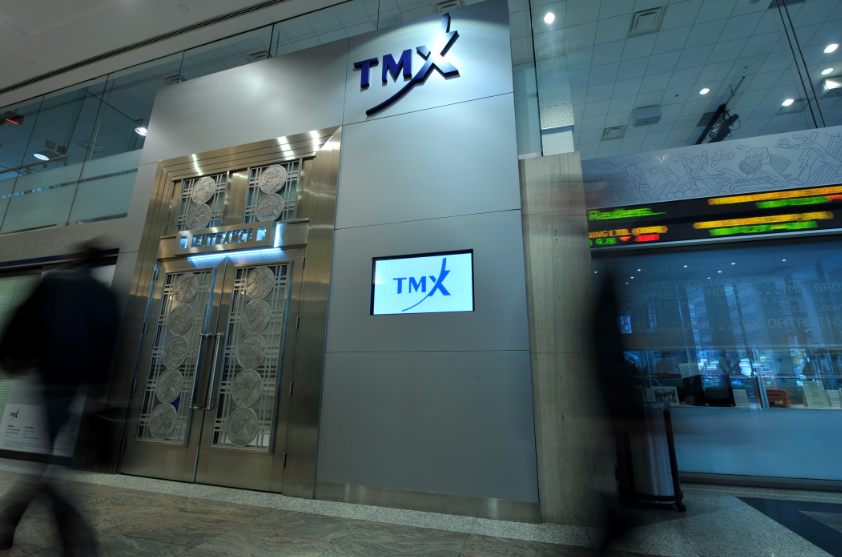When Canada Jetlines CEO Jim Scott decided to take the company public, the TSX Venture Exchange (TSX-V) was the only market he seriously considered.
He is one of many executives who believe that the TSX-V’s standards and regulatory requirements are manageable and sufficient to impress institutional investors and other international exchanges.
The CEO of the upstart airline has been trying to line up company financing since he and his partners first floated the idea in late 2013.
After initially intending to go public via a reverse takeover on the TSX-V, Scott’s team changed course and sought other venture capital financing.
Now they are back with a second attempt at a reverse takeover, this time with the appropriately named Jet Metal Corp. (TSX-V:JET), which serendipitously already has an aviation-oriented ticker symbol.
“We’ve had a lot of feedback from institutions where people say, ‘We would invest in you but you have to be public,’” said Scott, whose company is too small to trade on the Toronto Stock Exchange (TSX). “A lot of institutional investors won’t invest in a company on the Canadian Securities Exchange. The minimum they will accept is the TSX-V.
“The TSX-V has done a site inspection on us. They don’t just let any company on. We have to show that we have sustainability for at least one year on our budget cash flow.”
Exact requirements are complex and vary depending on the sector of the company proposed for listing.
One perk of doing a reverse takeover (in which a smaller company acquires a larger one) with Jet Metal is that the company is also listed on the OTC Bulletin Board (OTCBB) in the U.S., Scott said.
While that exchange is widely maligned for being loosely regulated, it’s an easier exchange for U.S. investors to deal with than the TSX-V.
Those wary of investing on the OTCBB can take comfort that Jetlines has gone through necessary due diligence to list and be maintained on the TSX-V, Scott said.
It’s also easier for companies to list on other global exchanges, such as the Johannesburg Stock Exchange and the Frankfurt Stock Exchange (FWB), if they’re already listed on the TSX-V.
For example, Vancouver’s Nano One Materials Corp. (TSX-V:NNO) went public on the TSX-V in March 2015, and then found it relatively easy to go public on the FWB eight months later.
“A listing on the TSX-V almost automatically gives you access to the FWB,” said Nano One president John Lando.
Like Jetlines, Nano One was not big enough to list on the TSX or large exchanges in the U.S., such as the Nasdaq or the New York Stock Exchange.

(Photo: The TMX Group owns the Toronto Stock Exchange and the TSX Venture Exchange | submitted)
Lando contemplated listing on London’s Alternative Investment Market, which is intended for smaller, growing companies, but he found that the costs were significantly higher than those for the FWB.
He also listed on the FWB because his company is in the clean-technology sector, marketing a process that makes it cheaper to manufacture batteries.
“You can see from the Volkswagen scandal that there is a lot of interest in Germany, and the general population in Europe, about clean technology,” he said.
Many Vancouver mining companies also have listings on the Peruvian Bolsa de Valores de Lima but Lando never considered that option.
“I’ve seen listings in Lima in the past, but they never really quite took off,” he said.
U.K. and German stock exchanges in merger talks
The London Stock Exchange (LSE) confirmed February 23 that it is in merger talks with Germany’s Deutsche Boerse (GDB).
What the LSE is calling a “merger of equals” would not affect each company’s subsidiary exchanges from operating under their current brand names. Both those stock exchanges are attractive for smaller companies. For example, the LSE owns the Alternative Investment Market while GDB owns the Frankfurt Stock Exchange (FWB).
This is the third time that the two exchanges have considered merging, following a first attempt in 2000 and then a second effort in 2004-05.
Would an LSE-GDB merger make it tougher for companies listed on the TSX-V to get secondary listings on the FWB?
“The short answer is, ‘I don’t know,’” TSX-V president John McCoach told BIV.
Chinese market gyrations highlight need for exchange oversight
Rumours about loosened regulatory oversight on Chinese stock markets sent stocks on those exchanges plunging more than 7% on February 25.
The anxiety highlighted the importance for exchanges to have sufficient oversight to foster investor confidence, McCoach said.
“Whatever we do to reduce our clients’ costs, to diversify the market and to increase liquidity, we always have to keep in mind that investor confidence is paramount,” McCoach said.
“None of it really matters without investor confidence.”
The rumours in China were that companies now listed on that country’s over-the-counter (OTC) market would be given the chance to shift to the main exchanges in Shanghai and Shenzhen.
More than 5,000 companies are listed on China’s OTC exchange, which is also known as the National Equities Exchange and Quotations.
A separate rumour held that the Chinese Securities Regulatory Commission would reform regulations to make it easier for companies to go public via an initial public offerings on the ChiNext exchange.
The ChiNext Exchange plunged 7.56% whereas the Shenzen Stock Exchange fell 7.34%, the Shanghai Composite Index lost 6.41% and the CSI 300 Index, which tracks Shenzen and Shanghai-listed blue-chip companies, gave back 6.14%.




